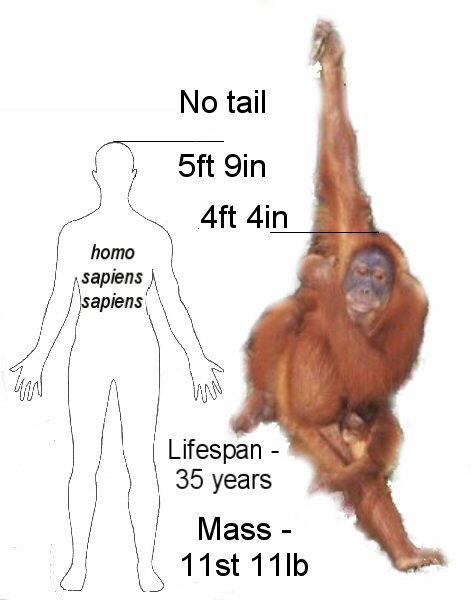SPECIES: Sumatran Orangutans
The sumatran orangutan is smaller than the bornean orangutan, which is the only other extant orangutan species.
The sumatran orangutan's cheek flaps are flatter to its face than the outward protruding bornean orangutan's cheek flaps.
The sumatran orangutan tends to prefer eating insects than the bornean orangutan, although its diet is more commonly made up of fruit.
The sumatran orangutan is known to create and use tools for the purpose of hunting for insects and capturing and preparing fruit for consumption. The manner in which they do this is a display of this species' high intelligence.
This intelligence may point towards the sumatran orangutan's more social nature than the bornean orangutan. The sumatran orangutan is generally happy to travel and feed in groups, although males are quite weary of one another.
The sumatran orangutan species contains far less individuals than the bornean orangutan and is critically endangered. It is reckoned that there are less than 8,000 individuals remaining in the wild, and they are exclusive to the island of Sumatra in Indonesia.
They are thought to have speciated from the bornean orangutan around 1.5 million years ago. Since then, the sea levels have risen and separated the sumatran orangutans onto the island of Sumatra from the bornean orangutans which inhabit the island of Borneo.
 |
Conservation status - Critically Endangered
|
|
|
Gestation period - 36 weeks